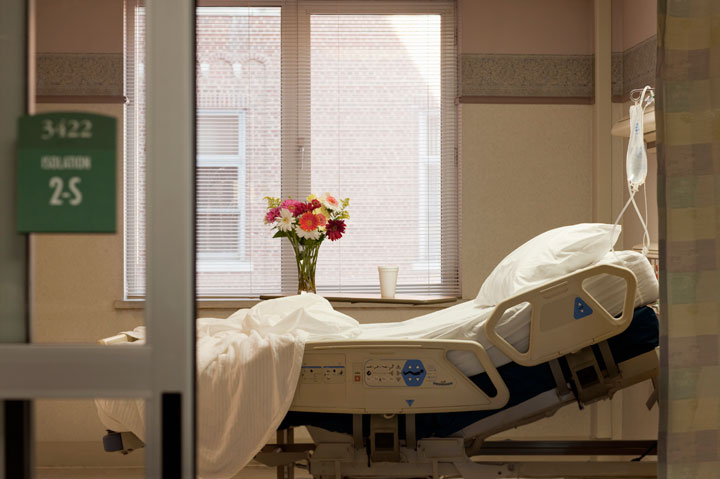TORONTO – While making his rounds in the emergency room at St. Catharines General Hospital, Rafi Setrak carries one trusty sidekick around with him – his iPad.

Setrak, deputy chief of emergency medicine at the hospital, uses the device to assess patients, show them their test results, communicate with nurses and other ER doctors and even look up their medical records from other hospitals.
Technology is changing the way emergency medicine – and healthcare in general – operates, according to Setrak.
“Technology has become an integral part of what we do,” he said, a self-described geek himself.
St. Catharines General, which just moved to a new site in the city of St. Catharines, Ont. in March, is described as the most high-tech hospital in the country. In addition to having the largest wireless installation of any hospital in Canada, the site has embraced the use of mobile devices by medical staff to improve patient care.
Setrak says that by embracing mobile gadgets, doctors are able to deliver better health care.
“It increases our ability to make correct decisions – and the accuracy of those decisions – by bringing data that was never available before,” said Setrak.
“What that adds up to for the patient are multiple benefits – more accurate, fast decisions which leads to faster treatments. What it does is increases flow into the whole system.”
- Health task force blasted over ‘dangerous guidance’ for cancer screenings
- Dentists hesitant to sign up for federal dental plan; seniors advised to look at all options
- David Chang’s Momofuku to stop ‘chile crunch’ trademark battle after outcry
- Over 25% of young Canadian deaths linked to opioids amid pandemic: study
Setrak estimates that 80 to 90 per cent of doctors in the ER carry iPads with them at all times.
Upon arrival patients are added to an electronic system – which doctors nicknamed ‘the tracker’ – where their assigned beds, physicians, orders and diagnosis are stored.
Doctors and nurses also use the system to communicate electronically. They are notified when test results come back from the lab and notified of when it’s time to see their patients again.
They also now have the ability to access test and medical records from other hospitals in order to help speed up the diagnosis time. This is especially vital in the ER.
“If you show up in my department at two o’clock in the morning with chest pain and you had tests done in Hamilton, it would have taken me eight to ten hours to get those results ten years ago,” said Setrak, who now has the ability to pull up those records and use those test results to help the diagnosis process.
Patients are also benefiting.
Images, right down to x-rays of broken bones, can be pulled up on the doctor’s device which helps the patient become more involved with their diagnosis and treatment, according to Setrak.
“It becomes part of the conversation and it makes the patients not only feel better but makes them more informed,” said Setrak.
“It’s not only emotional – it just engages the patient on a whole new level in their care.”
Setrak noted that while doctors used similar technology at St. Catharines’ old site, the state-of-the-art wireless system is helping to supercharge doctor’s abilities.
“It feels like we’ve moved from the 401 at peak hour to the 407 – everything is just so fast – all of the software and the applications just come to life. They perform so much better just because of a well-built, sturdy and fast infrastructure that the new hospital has brought to us,” said Setrak.
Wireless systems play key role in hospitality of patients
But the wireless network is also playing a key role in making patients feel comfortable.
In-patient rooms are equipped with bedside touch-screen terminals that that provide phone service, Internet access, TV, radio, movies-on-demand and video-calling with Skype. Patients can even scroll through the day’s meal options from bed.
“That’s the stuff that makes a difference.”
Wilson has been heavily involved with the planning of the IT infrastructure of the new hospital and has been working closely on the project for three years.
St. Catharines General’s new site is the first hospital in Canada to use this type of wireless system – one that is widely used in the U.S. It was designed with functionality in mind and allows cellphone service to be evenly distributed throughout all areas of the hospital.
“If you are in visiting a friend or family member and you are walking into the building, you don’t want to lose access to your cellphone because that’s how people live,” said Wilson.
Canada’s struggle with digital healthcare
Hospitals like St. Catharines that have embraced technology with open arms are quickly becoming the norm in Canada; however, the country itself has had its fair share of struggles with a digital health-care system.
Canada’s eHealth endeavor has been highly criticized as initiatives in Ontario, B.C., N.B. and P.E.I. have all been accused of having little to show for the amount of money invested and mishandling contracts.
In March, industry experts said that primary-health care centres in Ontario have struggled with the transition to electronic patient records.
Canada Health Infoway, the government-funded company responsible for overseeing and funding the transition to a digital health care system, was criticized by the Canadian Medical Association Journal in 2011 for not having electronic health records for at least 50 per cent of Canadians by 2010 – an initiative started in 2001.




Comments